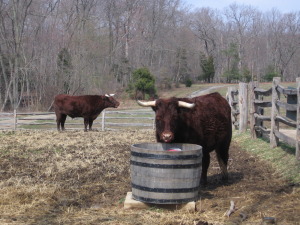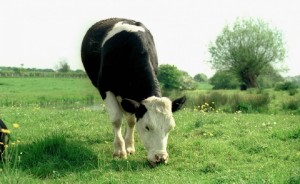A wide variety of food that we eat every day, is derived from livestock. Think about the toast and omelet or milk and cereals you had this morning, even the creamed in your coffee or the cheese in your hamburger. We get various types of food in our diet that come from livestock no matter what food group you are thinking of. Livestock and fish provide us with essential nutrients like protein, carbohydrates, vitamins, antioxidants and essential minerals for us to survive, grow healthy and energetic. We also get a range of other products from livestock, but we will focus on the role of livestock in human health and nutrition in this article.
Livestock have played a significant role throughout human evolution, locomotion and development. Livestock have also contributed to our food supply by converting low-value materials, inedible or unpalatable for people, into milk, meat, and eggs, and supplied for our textile and leather industries, fertilized our lands and provided traction so that other food sources could be grown. When taking care of livestock, we should take extra care so that they grow healthy with all natural ingredients and we should not alter their natural biological characteristics.
 You have all heard the old saying, “you are what you eat.” While this saying is true, it is also true that you are what you eat eats. So, we should not only pay attention to what we are eating, but also to where it came from, how our food was grown, how it was processed and stored, and what our food ate. Our health is directly affected be these factors. “It’s not only important what we eat. It also matters what the foods that we eat, ate”, says Authority Nutrition.
You have all heard the old saying, “you are what you eat.” While this saying is true, it is also true that you are what you eat eats. So, we should not only pay attention to what we are eating, but also to where it came from, how our food was grown, how it was processed and stored, and what our food ate. Our health is directly affected be these factors. “It’s not only important what we eat. It also matters what the foods that we eat, ate”, says Authority Nutrition.
When choosing your food, we all know that organically grown, natural food is the best for us. If that is true for our health, it is also true for the livestock that we raise and grow, and therefore, feed for your livestock should contain foods that are natural and do not contain any chemicals, synthetic fertilizers, GMOs, or pesticides. Any chemical that gets introduced in the natural eco-system and food chain can potentially become health hazard for humans as we consume them.
The ecosystem starts at the microscopic level in soil where germs interact with the soil and plants. There are microbes that take part in nitrogen and carbon cycles in nature that help in converting nitrogen from the air into nitrates which plants can easily absorb and make food for livestock. Artificial and synthetic elements can cause imbalances in nature and the ecosystem.
 The role of livestock in the food production sector has been significant since the beginning of human civilization when human beings learned to domesticate and raise animals for their benefit. Livestock not only provide food but also other products that can be sold by livestock producers, such as fiber from their fleece and leather from their skin, their milk, eggs, bones, horns, manure for fertilizers and so on. Some livestock also provide companionship and some provide traction for the fields and transportation for the owners, and therefore, livestock can be assets for a farmer which can easily be converted to cash in times of need.
The role of livestock in the food production sector has been significant since the beginning of human civilization when human beings learned to domesticate and raise animals for their benefit. Livestock not only provide food but also other products that can be sold by livestock producers, such as fiber from their fleece and leather from their skin, their milk, eggs, bones, horns, manure for fertilizers and so on. Some livestock also provide companionship and some provide traction for the fields and transportation for the owners, and therefore, livestock can be assets for a farmer which can easily be converted to cash in times of need.
Livestock farming can contribute to food security and be a source of income. In spring, when you have grass on your field, feeding your livestock does not cost you anything. The best way to keep your livestock healthy is to feed them all natural grasses that have balanced nutrients, and let them graze and grow naturally. When winter comes, your fields may not contain enough grass to support the livestock and so, you will have to supply them with additional food supplements and fodder.
Inadequate livestock nutrition can become a problem that could give rise to other health issues in animals, especially in the winter when your animals will need extra energy to cope with the harsh weather. Livestock need extra energy to cope with harsh weather, and so, food containing high energy should be supplemented during the winter season. Buying hay could become an expensive option for you compared to an aquaponic fodder system that you could easily be using to grow your own microgreen fodder. Animals love the luscious young green grasses and it is full of nutrition value.
 You can also buy Feed in a box from us that will supply you fully-grown micro-greens from grasses like barley, wheat or oats to feed your animals as much as you need. There are different quantities of boxes available, so you are able to purchase enough feed for your animals, no matter if you own two rabbits or many horses.
You can also buy Feed in a box from us that will supply you fully-grown micro-greens from grasses like barley, wheat or oats to feed your animals as much as you need. There are different quantities of boxes available, so you are able to purchase enough feed for your animals, no matter if you own two rabbits or many horses.
Maintaining natural evolution, biodiversity, and ecosystem from the microbial level to the global environment is critical for our sustainability and future. Therefore, take extra care of your livestock this winter, proved them with all natural food and shelter, making sure that all their physical requirements, such as food, water, shelter and vet care, are met.
Read more about our DIY microgreen feeding system or our microgreen fodder system. Feel free to leave a comment or question in the comment box below. Click here to book a meeting with us.
Source: Sustainable livestock Nutrition




There are actually pletny of particulars like that to take into consideration. That could be a great level to deliver up. I offer the ideas above as basic inspiration but clearly there are questions just like the one you deliver up the place crucial thing might be working in sincere good faith. I don?t know if best practices have emerged round things like that, but I’m positive that your job is clearly recognized as a good game. Each girls and boys really feel the impression of only a second’s pleasure, for the rest of their lives.